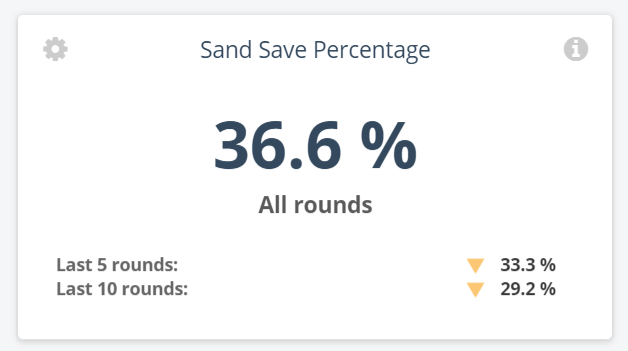
A sand save in golf is defined as:
“The percent of time it takes a player to get the ball ‘up and down’ from a greenside bunker, regardless of score”.
It is a useful statistic to measure a player’s short game ability from the sand, but it has a few major downsides:
- Let’s say a player has a bunker shot, but hits it to 50 feet, and then makes the subsequent 50-foot putt. This is a successful sand save, but the player hit an awful bunker shot, followed by an excellent putt. The sand save percentage doesn’t measure this nuance, and just looks at whether the ball was holed within 2 shots. In this sense, the sand save stat does a very poor job in correctly assessing this player’s bunker shot skill level.
- Let’s say a player has a bunker shot, and hits it to 1 inch, and then taps the putt in for a successful sand save. The sand save stat fails to account for the fact that the bunker shot was world-class, and the 1-inch putt was merely average, and just looks at whether the player was able to hole out in 2 strokes or less from the bunker.
- When looking at 1 and 2 above, it’s clear that those two examples represent vastly different qualities in shots from the bunker, yet this stat doesn’t account for this nuance. That’s why it’s good to keep in mind that the sand save stat is limited in actual usefulness, since it is very difficult to know what it actually measures.
We would also recommend to look at a players’ strokes gained from a greenside bunker . The SG variables are able to isolate the bunker shot on its own, and therefore is able to capture the nuances that are otherwise missed.


